
| |||||||||||
| |||||||||||
|
SEE ALL
|
Baboon Skirmishes and Chases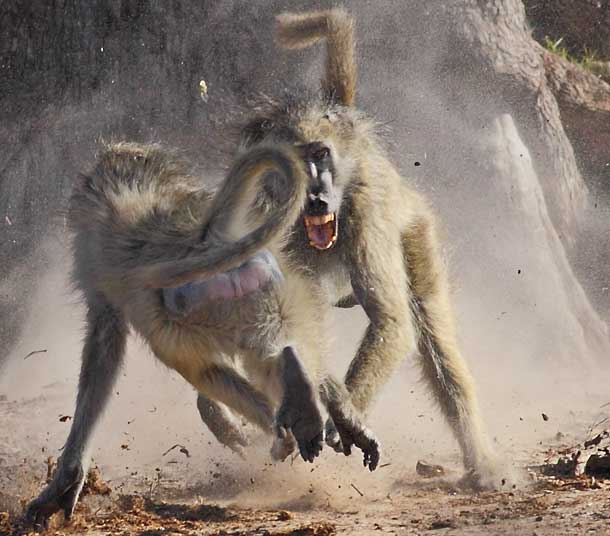 Adult male baboons intimidate those lower in the troop hierarchy by displaying their formidable canines, fighting, and chasing their victims
Adult male baboons intimidate those lower in the troop hierarchy by displaying their formidable canines, fighting, and chasing their victimsBaboons are fascinating animals but don't get the attention they deserve. When you're on an African safari, chances are you'll be viewing the wildlife from a game drive vehicle that you share with others, under the control of a safari guide/driver. The guide knows that most guests want to see the more glamorous wildlife, so less spectacular animals like baboons and monkeys tend to be neglected as you drive past, always in hope of seeing something more exciting further along the track. On a recent visit to Hwange National Park in Zimbabwe, we opted to spend a couple of hours parked at one of the many pans in the park where we watched elephant, buffalo, giraffe, and zebra coming down to the pan to drink. During this coming and going, a troop of chacma baboons arrived. They reminded me of a noisy, unruly extended family - from grumpy old men, bickering aunts, strutting fathers to cheeky kids and know-it-all adolescents. What struck me in particuler were the frequent squabbles, skirmishes, and chases between members of the troop, as the pictures below illustrate.
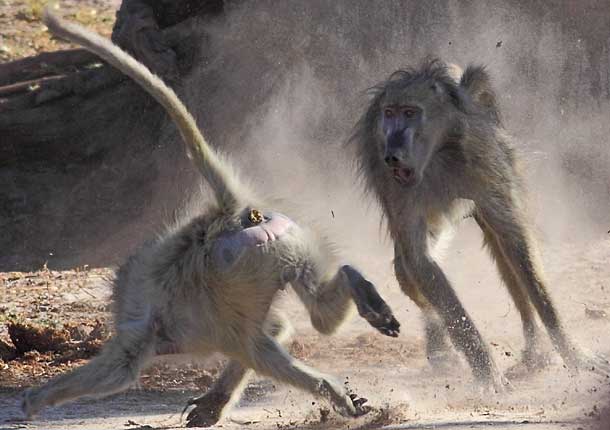 Here the aggressor doesn't pursue the victim further, so he escapes, only to find more trouble brewing ...
Here the aggressor doesn't pursue the victim further, so he escapes, only to find more trouble brewing ...
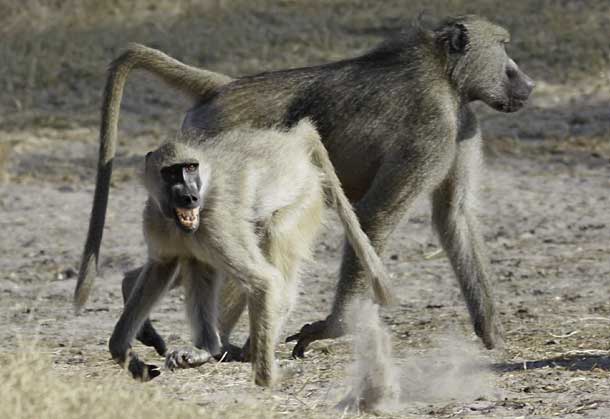 While the big male in the backround ignores him, there's another aggressor approaching from the right
While the big male in the backround ignores him, there's another aggressor approaching from the right
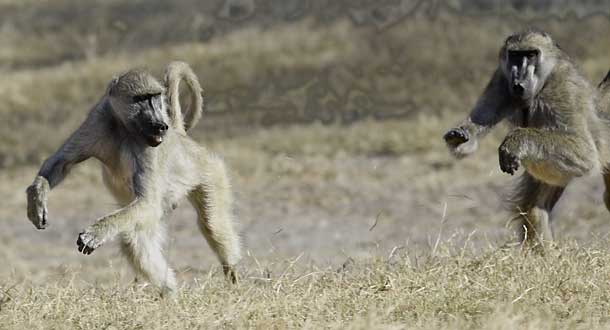 Time to flee, as a new pursuit begins
Time to flee, as a new pursuit begins
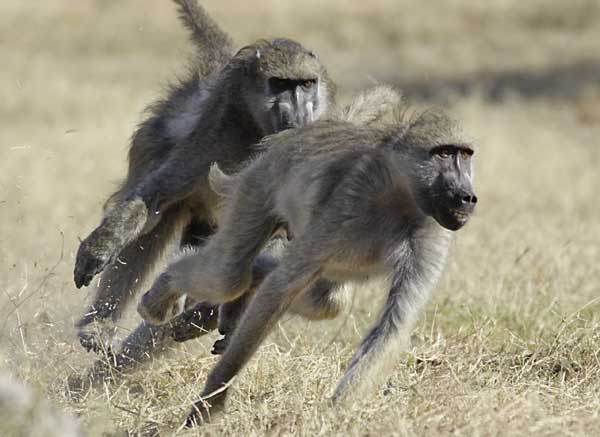 Running at full tilt to keep out of reach of his attacker
Running at full tilt to keep out of reach of his attacker 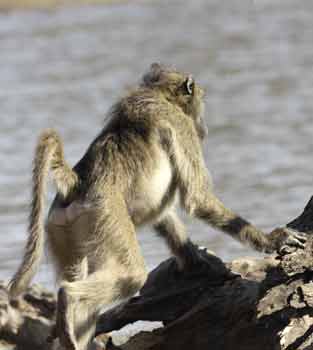
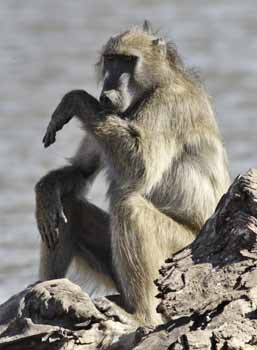
He gets away, climbs on to a tree stump, and takes a breather 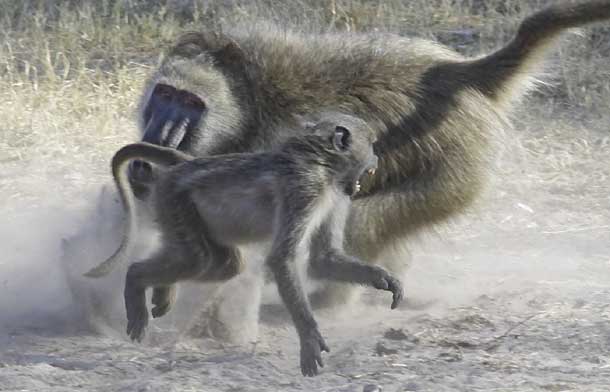 Meanwhile a big adult male decides to discipline a juvenile, who backs away in fear
Meanwhile a big adult male decides to discipline a juvenile, who backs away in fear 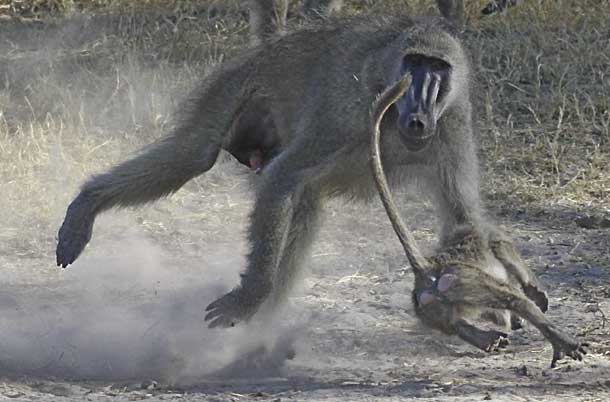 ... but too late as he's brought to ground
... but too late as he's brought to ground 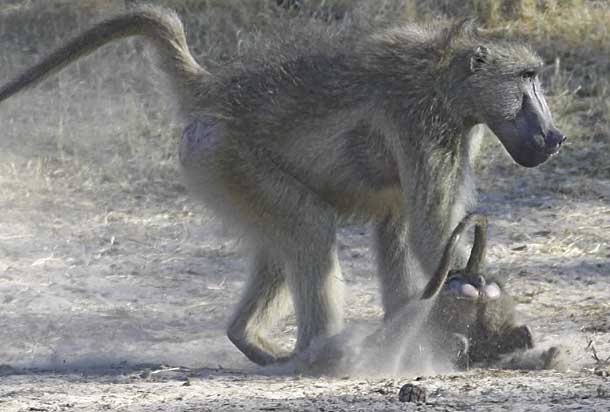 and unceremoniously pushed into the dirt
and unceremoniously pushed into the dirt 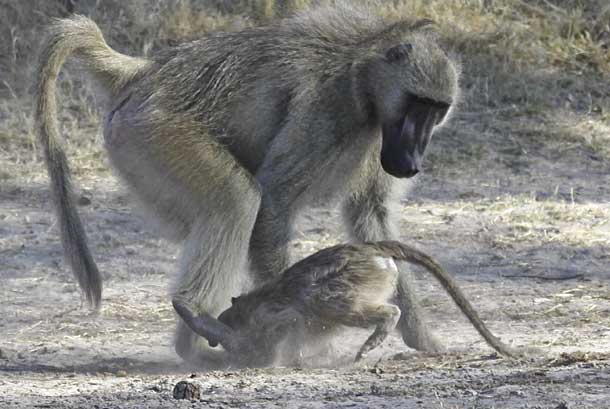 where he takes a foot to the head while grovelling in the dust
where he takes a foot to the head while grovelling in the dust Animal behaviorist Richard Despards Estes, in his excellent book
The Behavior Guide to African Mammals "The frequency and intensity of aggression in a baboon troop vary greatly, largely as a result of troop composition and relationships between individual males, in particular. If the rank hierarchy is well established, dominance is asserted and acknowledged with little or no overt aggression. But troops with recent male immigrants or newly matured resident males tend to be unstable." He goes on to explain: "Even in stable troops, practically any disturbance, internal or external, is apt to provoke disciplinary action by dominant males. Teasing or bullying of small baboons by older juveniles and squabbles between females frequently trigger chases punctuated by shrieks, barks and roars. If a male catches his victim, he may seize it, beat it with his hands, rub it on the ground, bite it in the neck, and even pick it up in his jaws. Estes says that, "despite their apparent ferocity and the disparity in size, such attacks rarely last more than a few seconds or result in visible injury". That was certainly the case on this occasion, with all the chases and skirmishes ending quickly with no apparent harm done. And, in between the bursts of frenetic activity, the troop carried on doing what baboons do - grooming each other, foraging for food, and crouching down to drink from the pan (below).
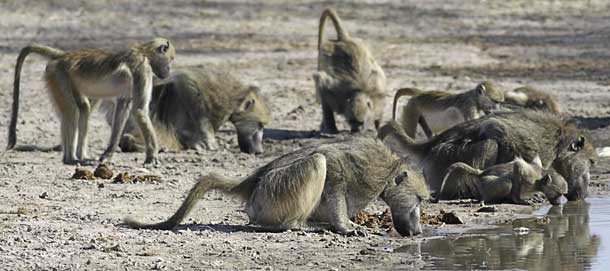 Chacma baboons crouching down to drink from a pan in Hwange National Park, Zimbabwe
Chacma baboons crouching down to drink from a pan in Hwange National Park, Zimbabwe Copyright Scotch Macaskill, www.wildlife-pictures-online.com Return to Wildlife Picture Stories Permitted Uses: Photographs under copyright. See Terms of Use. | ||||||||||
|
Contact Details: Scotch Macaskill, Dirt Road Traders, Currys Post Road, Howick, KwaZulu-Natal, South Africa. Tel: +27 (0)82 578 2329. Privacy: Your privacy is guaranteed. See our Privacy Policy for more. This site accepts advertising and other forms of compensation - see Disclosure and Advertising for details. Site updated: 2021. Copyright © 2002 - 2021 Scotch Macaskill | |||||||||||